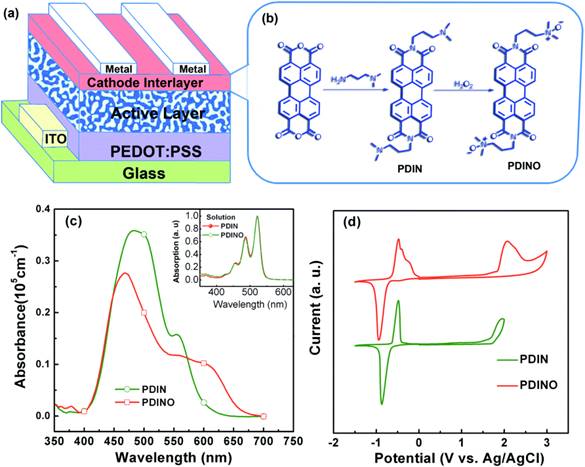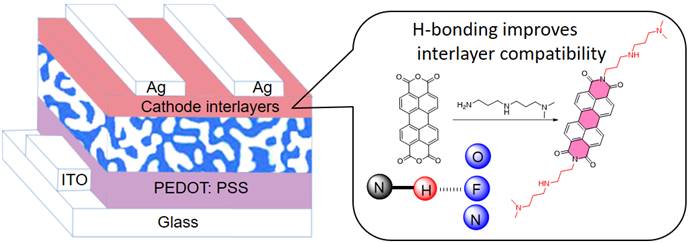Organic solar cells (OSCs) becomes a really hot research topic for light in weight, high flexibility, large-area production, etc. Researchers are working to improve the performance and environment-friendly of OSCs. They proposed a series of strategies in improving PCE and stability such as synthesis new type acceptors, optimize battery process and introduction of electron transport layer.

Fig 1 Device structure of the OSCs
“Nowadays, developing solution-processed stable organic cathode interlayers (to replace the active metal cathode and enhance the device stability) is an important topic in the field of organic solar cells. A number of efficient organic cathode interlayers have already been reported, however they are generally very thickness-sensitive (usually less than 10 nm). The thickness-sensitive problem excludes their compatibility with large-area roll-to-roll processing technology, which is required for low-cost flexible organic solar cells. It is thus highly desirable to find thickness-insensitive organic cathode interlayers.”[1]

Fig. 2 (a) Device structure of the PSCs. (b) Synthetic route towards PDI-interlayers. (c) Film absorption spectra of PDI-interlayers (105 cm-1). The inset shows the solution absorption. (d) Cyclic voltammograms of the PDIs.
Yongfang Li[1] etc reported two perylene diimide (PDI) derivative cathode interlayers in 2014, differing only in the presence of either amino (PDIN) or amino N-oxide (PDINO) terminal substituent(Fig. 1b). In this paper, for the first time thickness-insensitive small-molecule-based cathode interlayers are reported. Notably, the two solution-processed cathode interlayers they designed and developed are easy-accessible using environmentally friendly reagents, and they exhibit promising performances in photovoltaic applications.

Fig 3 Device structure of the OSCs and H-bonding improves interlayer compatibility
In 2020, Zhiguo Zhang and Yongfang Li [2] etc. reported a hydrogen-bonding interfacial material, aliphatic amine-functionalized perylene-diimide (PDINN), which simultaneously down-shifts the work function of the air stable cathodes (silver and copper), and maintains good interfacial contact with the active layer. The OSCs based on PDINN engineered silver cathode demonstrate a high power conversion efficiency of 17.23% (certified value 16.77% by NREL) and high stability. The results indicate that PDINN is an effective cathode interfacial material and interlayer engineering via suitable intermolecular interactions is a feasible approach to improve device performance of OSCs.
References:
[1] Energy Environ. Sci. 2014, 7, 1966-1973.
[2] Nat Commun. 2020, 11, 2726.

